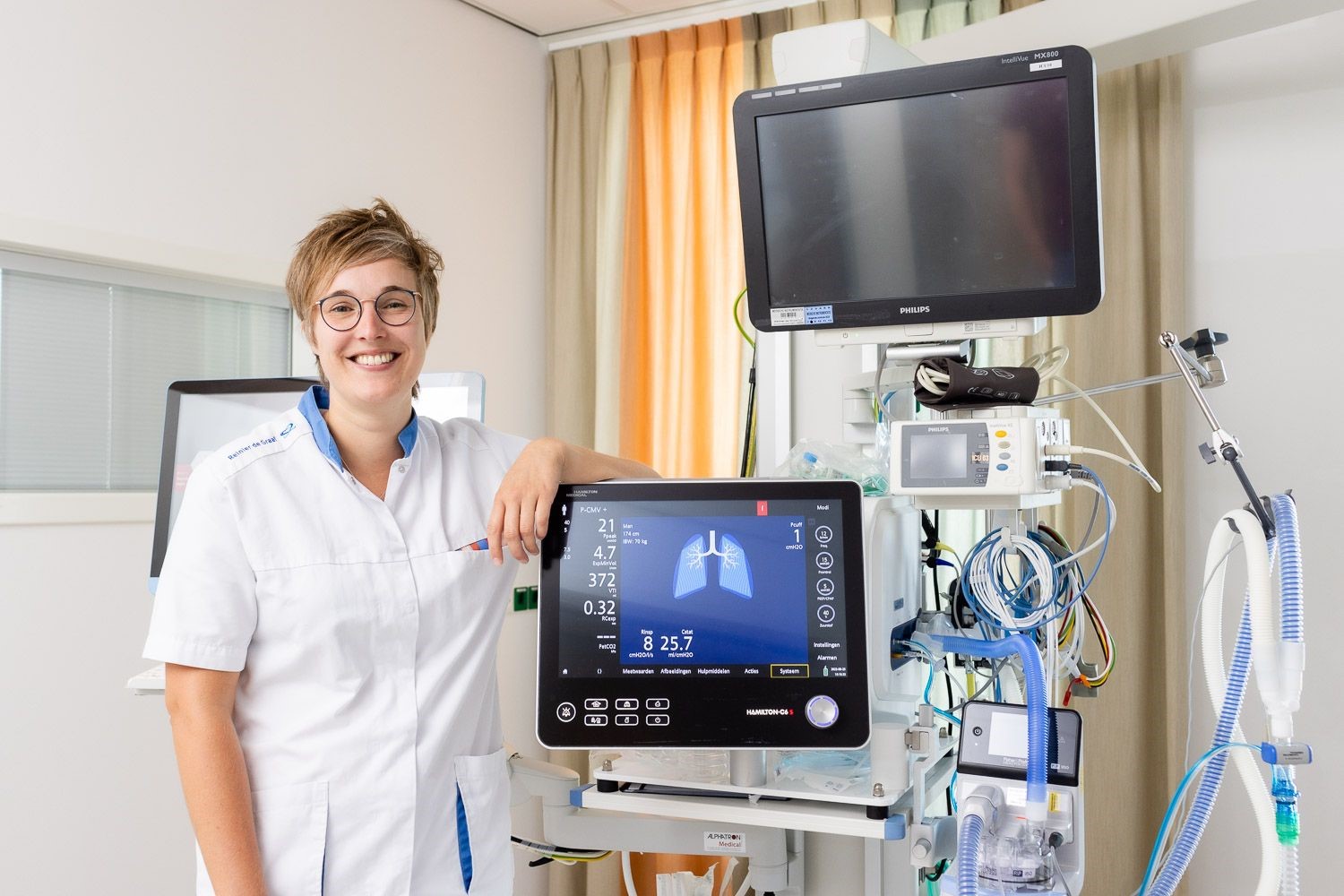 juli 2023
juli 2023A closed-loop ventilation mode that targets the lowest work and force of breathing reduces the transpulmonary driving pressure in patients with moderate-to-severe ARDS
Ventilation Practitioner Laura Buiteman-Kruizinga schreef dit artikel.
Abstract
Introduction
The driving pressure (ΔP) has an independent association with outcome in patients with acute respiratory distress syndrome (ARDS). INTELLiVENT-Adaptive Support Ventilation (ASV) is a closed-loop mode of ventilation that targets the lowest work and force of breathing.
Aim
To compare transpulmonary and respiratory system ΔP between closed-loop ventilation and conventional pressure controlled ventilation in patients with moderate-to-severe ARDS.
Methods
Single-center randomized cross-over clinical trial in patients in the early phase of ARDS. Patients were randomly assigned to start with a 4-h period of closed-loop ventilation or conventional ventilation, after which the alternate ventilation mode was selected. The primary outcome was the transpulmonary ΔP; secondary outcomes included respiratory system ΔP, and other key parameters of ventilation.
Results
Thirteen patients were included, and all had fully analyzable data sets. Compared to conventional ventilation, with closed-loop ventilation the median transpulmonary ΔP with was lower (7.0 [5.0–10.0] vs. 10.0 [8.0–11.0] cmH2O, mean difference − 2.5 [95% CI − 2.6 to − 2.1] cmH2O; P = 0.0001). Inspiratory transpulmonary pressure and the respiratory rate were also lower. Tidal volume, however, was higher with closed-loop ventilation, but stayed below generally accepted safety cutoffs in the majority of patients.
Conclusions
In this small physiological study, when compared to conventional pressure controlled ventilation INTELLiVENT-ASV reduced the transpulmonary ΔP in patients in the early phase of moderate-to-severe ARDS. This closed-loop ventilation mode also led to a lower inspiratory transpulmonary pressure and a lower respiratory rate, thereby reducing the intensity of ventilation.
Het hele artikel is hier te vinden.
